Toronto Blue Jays: Why Josh Donaldson Won’t Fall Victim to the Home Run Derby Curse

Toronto Blue Jays: Why Josh Donaldson Won’t Fall Victim to the Home Run Derby Curse
It was fun to watch Todd Frazier win the Home Run Derby in front of his hometown fans with his brother, Charlie, pitching to him. But now the Cincinnati Reds slugger will have to deal with the dreaded “Home Run Derby curse”, which seems to arise every year following the summer classic.
The best example of this “curse” was back in 2005 when Bobby Abreu ripped 41 long balls during the Home Run Derby, only to hit six more the rest of the season. Last year we saw Yoenis Cespedes crush 28 home runs during the Home Run Derby, but hit only eight more the rest of the season.
More from Toronto Blue Jays
- Blue Jays avoid disaster as Kevin Gausman injury not serious
- Blue Jays interested in outfielder Andrew Benintendi
- Blue Jays hope fresh start for Sergio Romo boosts bullpen
- Blue Jays need to have a break from Yusei Kikuchi
- Blue Jays: Nate Pearson suffers yet another setback
To take it a step further, of the 74 derby contestants since 2006, only 22 players saw their home run rates improve following the derby. That means of the eight participants in this year’s Derby, six of them will more than likely see their home run rate regress during the second half of the season.
This decline isn’t necessarily because of a “curse”, though. The more simple answer stems from a common concept known as regression to the mean.
Basically, regression to the mean is the tendency for extreme results (good or bad) to move closer to the average, which is usually generated over a large sample size.
Derby participants tend to be great examples of regression to the mean because fans, players or coaches tend to select players who have shown extreme power in the first half. Their tendency to select these player is natural, though. After all, who would really want to hear the selection committee say, “we can’t select player X because he is exemplifying extreme power numbers.”
But on the contrary, since most of these players are generally overachievers — or having career years — odds are high that they will regress to the mean in the second half.
Toronto Blue Jays fans are more than likely already familiar with this concept since slugger Jose Bautista‘s home run rate has regressed in two of the three years he’s participated in the derby. Granted, one was due to an injury.
Jul 13, 2015; Cincinnati, OH, USA; American League third baseman Josh Donaldson (20) of the Toronto Blue Jays prior to the 2015 Home Run Derby the day before the MLB All Star Game at Great American Ballpark. Mandatory Credit: David Kohl-USA TODAY Sports
But does this mean Josh Donaldson will suffer a similar fate? Not exactly.
Donaldson’s 19.6 percent HR/FB rate is a career-high, but it’s not a huge increase from his career mark of 16.7 percent. Additionally, his 47.5 percent medium contact and 38 percent hard contact rate are not too far from his career averages either, where he boasts a 54.5 percent medium contact rate and a 32 percent hard contact rate.
So what’s the biggest difference between Donaldson and every other hitter that tends to regress? For starters, he is using the entire field.
This season Donaldson has sprayed the ball all over the yard, posting a 35.6 percent pull rate, a 39.1 percent centre field rate and a 25.4 percent opposite field rate. All of those numbers, except for the pull rate, are career-highs.
Last season when Donaldson saw his home run rate drop from 17.2 percent in the first half to 11 percent in the second half, it wasn’t necessarily all the home run derby’s fault. Instead, you can point to his propensity to the pull ball, as he boasted a career-high 43.1 percent pull rate during the first half last season.
Although there is more that goes into why home run rates decrease, such as the combination of park factors, weather and sheer randomness, Donaldson is actually in a good position to keep his production intact.
Sure, the sheer number of home runs will decline, which is natural since there are fewer games during the second half of the season. However, with 37 home games remaining, Donaldson should continue to rake at the Rogers Centre this year and improve on his total of 14 long balls at home. Plus, he will play 13 games at positive park factor ball parks like Yankees Stadium, Fenway Park and the Rangers Ballpark in Arlington.
While Donaldson has posted a career-high HR/FB rate during this first half, he’s not an extreme case like Jose Bautista was in 2011, or like Chris Davis was in 2013. Instead, Donaldson is more than likely a beneficiary of his new home ball park.
So don’t panic if Donaldson gets off to a slow start with the long ball during the second half of the season. It’s probably not because of a “curse”. Instead, it’s more than likely because the Blue Jays play six of their first nine games on the road, that’s all.
Next: Why the Blue Jays Should Trade for Andrew Cashner
More from Tip of the Tower
- Cam Phillips making his mark on Toronto Argonauts offence
- Toronto Argonauts: 4 storylines ahead of matchup against Redblacks
- Federico Bernardeschi ready for new challenge with Toronto FC
- Toronto Argonauts overcome Roughriders in entertaining Touchdown Atlantic
- Buffalo Bills: Von Miller drawing inspiration from Bruce Smith